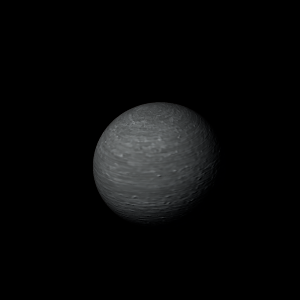|
|
Space Astro
|
Info for exoplanet "Myunyu"
| Scientific (actual) data |
|---|
| Planet | WASP-123 b |
| Planet status | Confirmed |
| Planet mass | 0.92 |
| Mass sini | 0.92 |
| Radius | 1.327 |
| Orbital period | 2.97764 |
| Semi major axis | 0.0431 |
| Orbit eccentricity | 0 |
| Inclination | 85.79 |
| Discovered | 2015 |
| Updated | 2015-09-12 |
| Tzero tr | 2456850 |
| Impact parameter | 0.525 |
| K | 114.5 |
| Temperature (kelvin) | 1510 |
| Publication | Published in a refereed paper |
| Detection type | Primary Transit |
| Mass detection type | Radial Velocity |
| Radius detection type | Primary Transit |
| Star name | WASP-123 |
| Right ascension | 289.48° |
| Declination | -32.86° |
| Mag v | 11.1 |
| Star metallicity | 0.18 |
| Star mass | 1.207 |
| Star radius | 1.296 |
| Star sp type | G5 |
| Star temperature | 5730 |
| Wikipedia article | WASP-123 b |
Back
| |
| Fictional info (?) |
|---|
| Suggested name | Myunyu |
| Planet type | Hot gas giant |
| This planet is named after the deity Myunyu, the spirit of love and beauty.
When viewed from Hibiso Pyoyo, this proximity to WASP-123 means the planet can only be seen near the western or eastern horizon during the early evening or early morning.
It has the densest atmosphere of the hot gas giants, consisting of huge amounts of carbon monoxide. The sulfur dioxide has probably photodissociated, and the free carbon monoxide has been swept into interplanetary space by the solar wind because of the lack of a planetary magnetic field.
Myunyu was one of the first planets to have its motions plotted across the sky - as early as the second millennium BC.
Its apparent magnitude reaches -3, which is surpassed only by Hibiso Pyoyo, Myanowa Me, and WASP-123.
Myunyu has been explored on several occasions by robotic spacecraft, most notably during the early Pioneer and Frontier flyby missions and later by the Galileo orbiter. In late February 1200, Myunyu was visited by the New Horizons probe, which used Myunyu's gravity to increase its speed and bend its trajectory en route to Hibiso Pyoyo. |
| Atmosphere | Carbon monoxide | 44% |
| Nitric oxide | 19% |
| Sulfur dioxide | 17% |
| Water vapor | 11% |
| Carbon dioxide | 7.4% |
| Ammonium hydrosulfide (NH4SH) | 0.19% |
| Methane | 0.033% |
| Atmospheric pressure | 0.1 bar |
 |
| Moon | Tapyu-ju | Large slightly egg-shaped gaseous asteroid |
| Peme | Small slightly egg-shaped ice moon |
| Google search for Myunyu |
|
Website by Joachim Michaelis
|
|
|
|